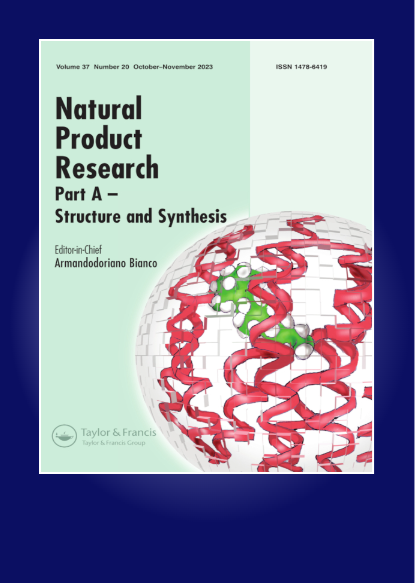Chemical composition and allelopathic potential of Schinus molle L. (Anacardiaceae) essential oils against common weeds of wheat crop
IF 1.9
3区 化学
Q3 CHEMISTRY, APPLIED
引用次数: 0
Abstract
This study aims to determine the chemical composition of essential oil (EO) extracted from the aerial parts of Schinus molle L., as well as its phytotoxicity on germination and seedling growth against some invasive weed species of cereal crops and wheat (Triticum durum, cultivar Chen’S). Gas chromatography/mass spectrometry (GC-MS) identified 51 components (representing 95.26% of the total EO composition). Shyobunone (10.14%), 1-phellandrene (9.63%), α-cadinol (7.46%), δ-cadinene (7.45%), and germacrene D (7.09%) were the most abundant compounds. The effect of EO on weed species germination, root and shoot growth was moderate to strong. When 0.02% and 0.03% of the oil were applied, EO had a strong phytotoxic effect, resulting in 100% failure of Bromus rigidus germination. In addition to determining the responsible compound, the observed phytotoxicity suggestedthat S. molle essential oil could be used as an environmentally friendly biopesticide.
小茴香精油对小麦常见杂草的化学成分及化感作用。
本研究旨在测定Schinus molle L.地上部提取的精油(EO)的化学成分,以及其对谷物作物和小麦(Triticum durum,栽培品种Chen’s)几种入侵杂草的萌发和幼苗生长的毒性。气相色谱/质谱(GC-MS)鉴定出51种成分,占总EO成分的95.26%。其中最丰富的化合物分别为Shyobunone(10.14%)、1-茶香烯(9.63%)、α-cadinol(7.46%)、δ-cadinene(7.45%)和germacrene D(7.09%)。EO对杂草种子萌发、根、梢生长的影响为中~强。在0.02%和0.03%的浓度下,EO具有较强的植物毒性,使刚毛Bromus rigidus萌发率100%失败。除了确定了主要化合物外,观察到的植物毒性表明,金丝桃精油可以作为一种环保型生物农药使用。
本文章由计算机程序翻译,如有差异,请以英文原文为准。
求助全文
约1分钟内获得全文
求助全文
来源期刊

Natural Product Research
化学-医药化学
CiteScore
5.10
自引率
9.10%
发文量
605
审稿时长
2.1 months
期刊介绍:
The aim of Natural Product Research is to publish important contributions in the field of natural product chemistry. The journal covers all aspects of research in the chemistry and biochemistry of naturally occurring compounds.
The communications include coverage of work on natural substances of land and sea and of plants, microbes and animals. Discussions of structure elucidation, synthesis and experimental biosynthesis of natural products as well as developments of methods in these areas are welcomed in the journal. Finally, research papers in fields on the chemistry-biology boundary, eg. fermentation chemistry, plant tissue culture investigations etc., are accepted into the journal.
Natural Product Research issues will be subtitled either ""Part A - Synthesis and Structure"" or ""Part B - Bioactive Natural Products"". for details on this , see the forthcoming articles section.
All manuscript submissions are subject to initial appraisal by the Editor, and, if found suitable for further consideration, to peer review by independent, anonymous expert referees. All peer review is single blind and submission is online via ScholarOne Manuscripts.
 求助内容:
求助内容: 应助结果提醒方式:
应助结果提醒方式:


